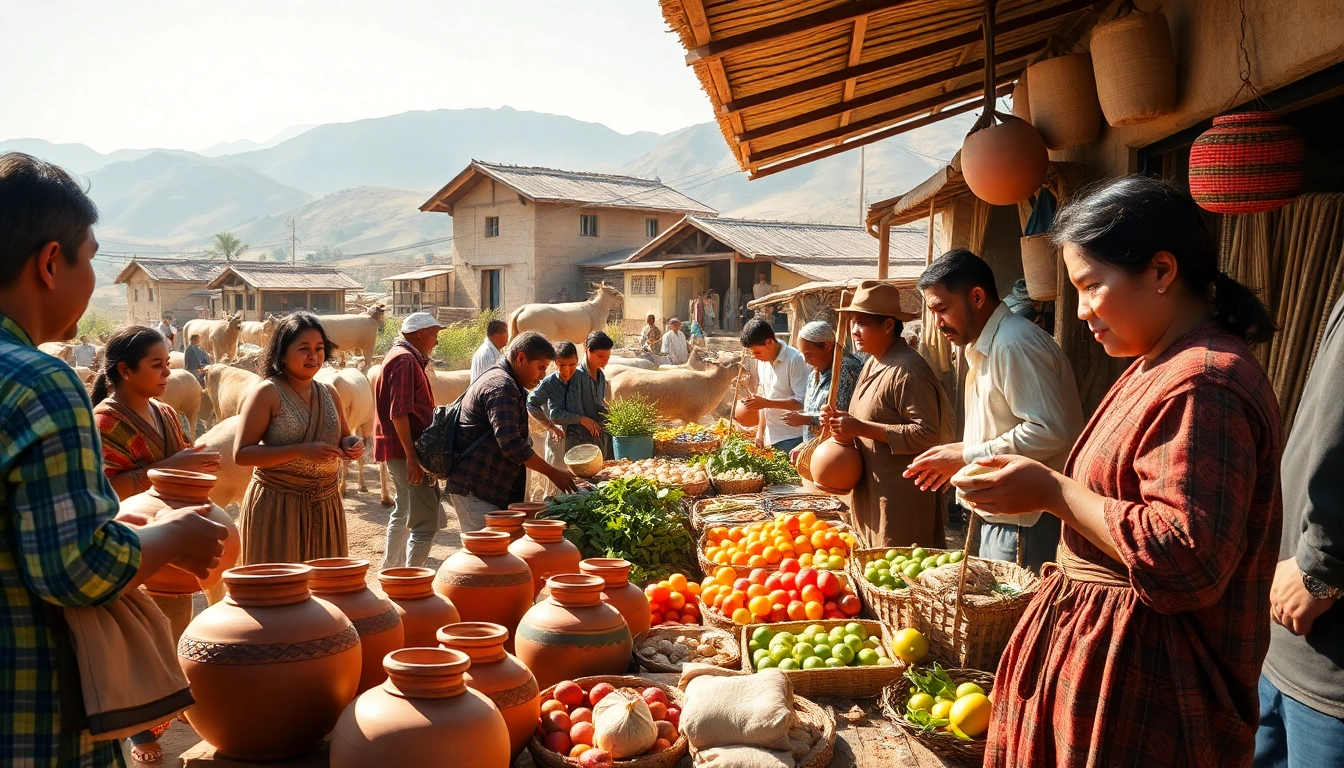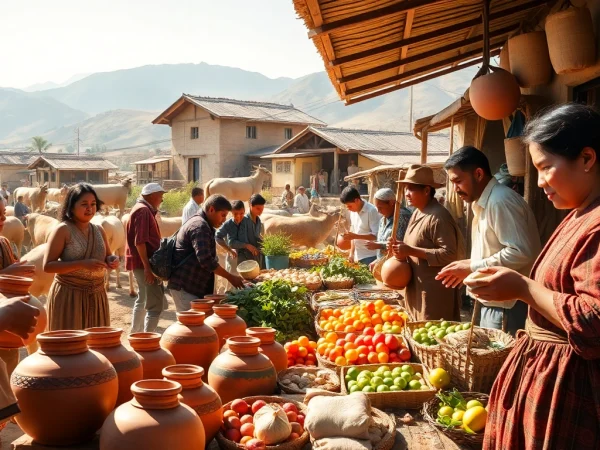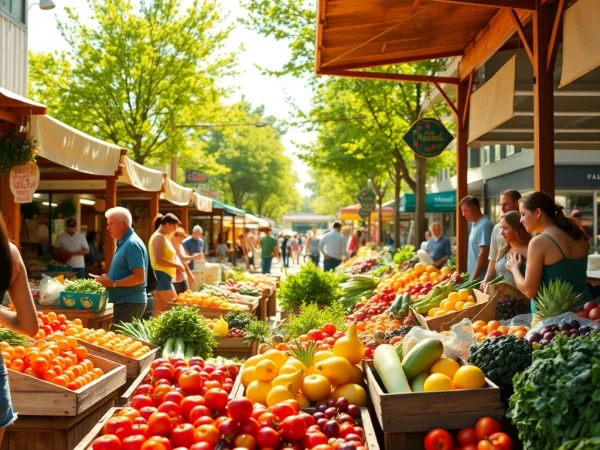Understanding Traditional Economy: Characteristics, Benefits, and Examples
Introduction to Traditional Economy
The landscape of economies worldwide is diverse, encompassing various systems that dictate the production, distribution, and consumption of goods and services. One such system is the traditional economy, which has roots deeply embedded in customs and cultural practices. Understanding this economic framework is crucial for grasping how societies evolve and adapt over time.
Definition of Traditional Economy
A traditional economy is an economic system characterized by the reliance on established customs, traditions, and cultural beliefs to drive economic activities. This system is typically found in rural or agrarian societies where subsistence farming or barter trade prevails. In such economies, decisions related to production and distribution are often guided more by longstanding practices than financial incentives or market competition.
Historical Context of Traditional Economy
The concept of a traditional economy can be traced back to ancient civilizations, where communities depended on agriculture, hunting, and gathering as primary means of sustenance. Over time, these societies developed intricate social structures based on shared customs, reinforcing their economic practices. As industrialization began to spread globally, many traditional economies faced substantial challenges due to emerging market economies and technological advancements.
Key Characteristics of Traditional Economy
Distinctive traits of traditional economies include:
- Subsistence Focus: Production is primarily aimed at meeting the community’s basic needs rather than for market sale or profit.
- Barter System: Goods and services are exchanged directly without the use of money, relying on mutual agreements between parties.
- Cultural Influence: Economic activities are often dictated by cultural norms, ceremonies, and traditions that have been passed through generations.
- Community-Centric: The economy functions within the context of community goals and familial ties rather than individual profit maximization.
The Role of Customs and Traditions
How Traditions Shape Economic Practices
Traditions play a crucial role in defining the economic practices within a traditional economy. These customs can dictate everything from seasonal planting and harvesting schedules to communal sharing and bartering methods. For example, many indigenous communities celebrate harvest festivals that not only mark the end of a growing season but also serve as opportunities to engage in trade and strengthen social bonds.
Examples of Cultural Influences in Traditional Economy
Various cultures display unique traditional economic practices that reflect their values and lifestyles. In many African tribes, cooperative farming services and communal landownership are prevalent, emphasizing collective effort rather than individual gain. Likewise, in certain Inuit cultures, sharing the catch of a hunt is not merely a gesture of generosity but a fundamental aspect of social structure and survival during harsh winters.
Impact of Customs on Trade and Commerce
The influence of customs and traditions on trade interactions cannot be overstated. For instance, in a traditional economy, negotiating a trade may involve complex social protocols, such as storytelling or gift exchanges, which go beyond the simple exchange of goods. This social aspect enriches the trading experience, weaving together economic activity and community relations.
Advantages of Traditional Economy
Sustainability and Environmental Impact
Traditional economies often practice sustainable methods of production that are in harmony with their local environments. Since these communities are typically reliant on natural resources for their livelihoods, they tend to have a vested interest in conserving them. Techniques such as crop rotation, indigenous farming methods, and the use of renewable resources foster a balance with nature, ensuring resources remain available for future generations.
Stability Through Established Practices
Because traditional economies are based on stable and time-tested practices, they often exhibit a level of resilience during economic downturns. The communal nature of these economies provides a safety net, ensuring that community members support one another in times of need, thereby reducing economic vulnerability.
Preservation of Cultural Heritage
The traditional economy plays a pivotal role in maintaining cultural identities and heritage. Through its reliance on customs and practices, it ensures that cultural narratives are preserved and passed on. This reflects in various facets of life, from art and music to language and clothing, interconnected with economic actions that reinforce the community’s culture.
Challenges Facing Traditional Economy
Modernization and Economic Pressures
Despite their advantages, traditional economies face significant challenges in a rapidly modernizing world. As globalization accelerates, many communities encounter pressures to abandon their traditional methods in favor of market-driven approaches. This often leads to loss of livelihood, as traditional skills may become undervalued or obsolete. Additionally, the influx of modern consumer products can undermine local production systems, creating dependency on external markets.
Technology’s Impact on Traditional Practices
The arrival of modern technology poses dual challenges and opportunities for traditional economies. On the one hand, technology can enhance productivity and open new markets for traditional goods; on the other, it risks eroding traditional practices and community cohesion. For instance, while mobile technology can facilitate better communication and trade, it may also lead to a decline in face-to-face interactions, crucial for the maintenance of communal bonds.
Vulnerability to External Economic Changes
Traditional economies are often more vulnerable to external economic changes compared to modern market economies. Changes in global prices, trade regulations, or environmental conditions can disproportionately affect these communities, leading to economic instability. A rich harvest, for example, may be worthless in the market if external forces create price drops or increased competition from larger agricultural entities.
Future of Traditional Economy
Integrating Modern Techniques with Traditional Practices
The future of traditional economies may rest on finding a balance between preserving cultural identity and integrating modern techniques. Innovations in agriculture, renewable energy, and sustainable practices can coexist with traditional methods. For example, introducing solar-powered irrigation in farming can enhance output while respecting the surrounding environment. By merging modern technology with traditional practices, communities can bolster their economic resilience and independence.
Case Studies of Successful Traditional Economies
Examining successful traditional economies reveals promising pathways for the future. Indigenous groups in various regions worldwide have maintained their cultural practices while adapting to changes. In certain areas of India, for instance, farmers use traditional organic farming methods in conjunction with modern agri-tech to produce high-quality, sustainable crops that fetch better market prices. These success stories highlight the potential of traditional economies to thrive by embracing adaptation without losing their essence.
The Path Forward: Balancing Tradition and Progress
Ultimately, the path forward for traditional economies lies in finding equilibrium between tradition and innovation. Protecting cultural heritage while embracing necessary modern advancements is crucial. This balance can foster economic independence and sustainability, ensuring that traditional economies not only survive but also flourish in an increasingly globalized world. As communities navigate these shifts, strategies that prioritize cultural values alongside contemporary needs will enable them to define their unique paths in the evolving economic landscape.









